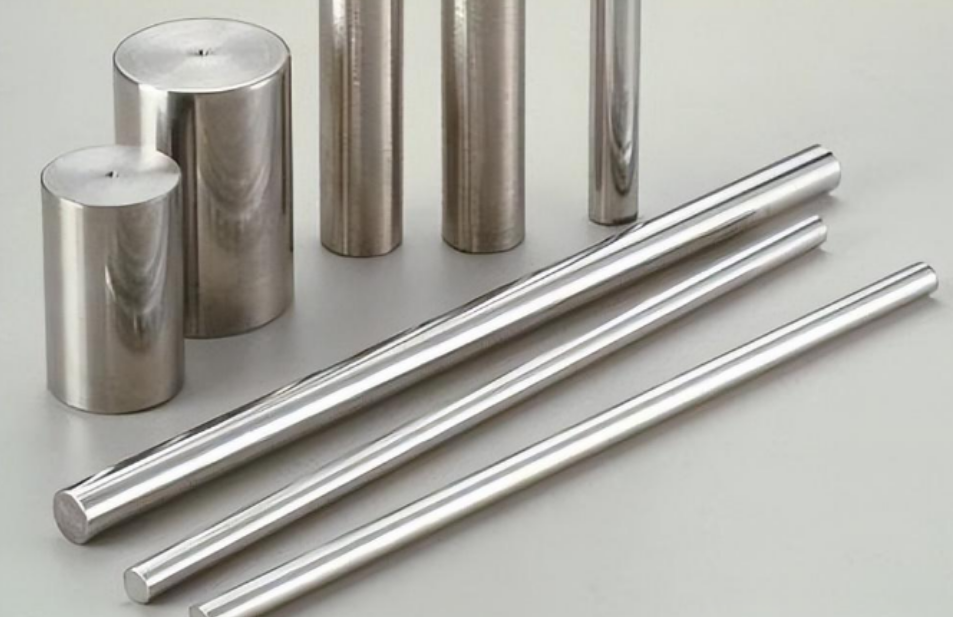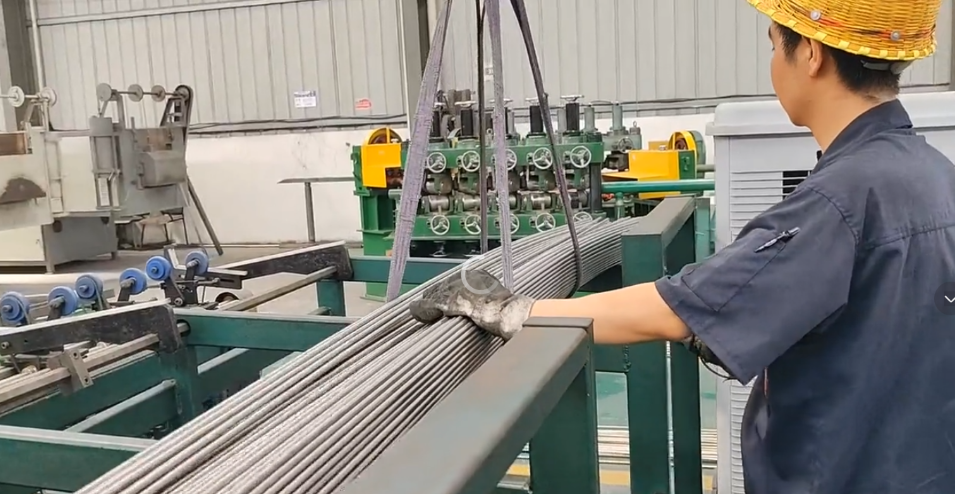

During the manufacturing process of titanium rods, geometric accuracy deviations are a common issue that requires close attention. A thorough investigation into the causes of geometric accuracy deviations in titanium rods is of great significance for improving the quality of titanium rod processing and optimizing processing techniques. Research has shown that geometric accuracy deviations in titanium rods are primarily caused by the elastic recovery effect of the material.
Titanium alloy bars exhibit numerous unique mechanical properties during hot forming. On the one hand, titanium alloys have high deformation resistance, requiring significant external force to induce plastic deformation during forming. Additionally, they exhibit severe springback, making it difficult for titanium bars to maintain their ideal geometric shape after hot forming, thereby increasing forming difficulty and reducing geometric accuracy. For example, in some complex titanium rod hot forming processes, even with advanced forming equipment and precise process parameters, due to the inherent properties of titanium alloys, geometric accuracy deviations are still difficult to avoid.
During hot forming, high temperatures soften the material. This softening effect significantly reduces the degree of distortion and springback in the formed parts to a certain extent. However, springback cannot be completely eliminated. Take the example of resistance heating drop forging or punch forming of titanium rods. After hot forming, although the amount of springback is reduced, a small amount of springback still remains. This results in the geometric accuracy of the parts failing to meet quality requirements, often necessitating laborious manual finishing work. Manual finishing is not only inefficient but also requires high skill levels from the finishing personnel, and even minor errors can affect the overall quality of the titanium rods.
Titanium alloys are widely used in many fields because they have a bunch of awesome properties. They’re super corrosion-resistant, so they can handle tough environments for a long time; their low density means they can be lightweight but still strong; and their high strength-to-weight ratio, along with good toughness and weldability, make them even more versatile. In industries such as petrochemicals, shipbuilding, and automotive, titanium alloys have achieved successful applications, providing strong support for the development of these sectors.
During the hot forming process of titanium alloys, a layer of oxide scale forms on the surface. The color of the oxide scale varies depending on the hot forming temperature. At approximately 600°C, the oxide scale appears blue; at approximately 850°C, it appears grayish-red; and at 900°C, it appears gray. Additionally, as the temperature increases, the difficulty of removing the oxide scale gradually increases.
Currently, the removal of oxide scale from titanium alloys is mostly carried out using a two-step method. The first step involves molten alkali washing, where high-temperature alkali solution reacts chemically with the oxide scale, causing it to partially dissolve or peel off. However, the molten alkali washing medium reaches a high temperature of approximately 450°C, and under such high-temperature conditions, it can lead to premature aging strengthening of α + β and β titanium alloy semi-finished products. Premature aging strengthening can alter the mechanical properties of titanium alloys, making further processing difficult. For example, it may lead to issues such as cracking or deformation of the material during processing.
The second step is acid washing, which is usually done with nitric acid and hydrofluoric acid. However, this cleaning method also has its problems, as it can cause hydrogen embrittlement corrosion on the surface of the titanium alloy. Hydrogen embrittlement corrosion reduces the toughness of the titanium alloy, making it prone to brittle fracture and other safety hazards during subsequent use, which seriously affects the quality and reliability of titanium alloy products.
In summary, the geometric accuracy deviation of titanium rods is mainly caused by the elastic recovery effect of the material. The characteristics of titanium alloys during hot forming and the problems encountered during oxide scale removal all have a significant impact on the processing quality of titanium rods. In-depth research into these issues and the exploration of effective solutions are of great significance for promoting the development of titanium alloy processing technology.
